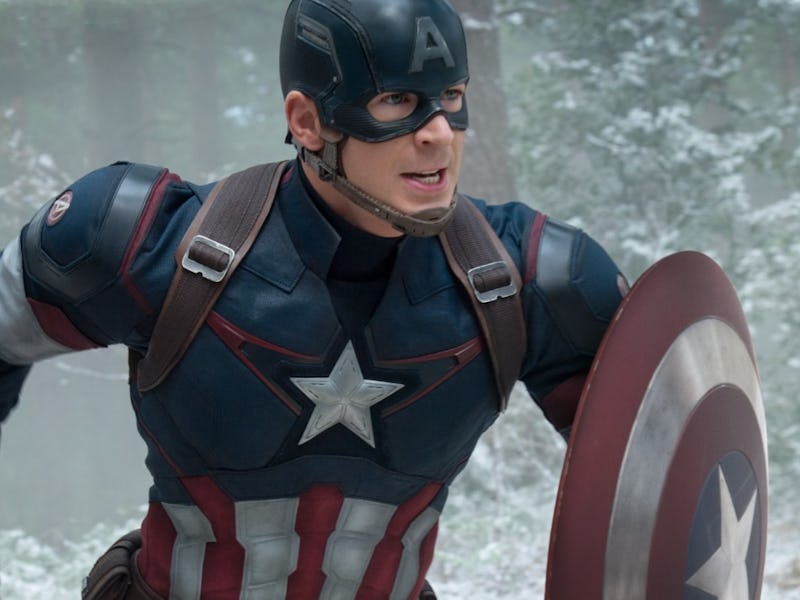Spider-Man: No Way Home trailer ruins the best part of Falcon and Winter Soldier
We need to talk about the fetishization of Captain America in the post-Endgame MCU.

After much fanfare, the second Spider-Man: No Way Home trailer hit screens everywhere on November 16. Fans were finally able to see Doc Ock, Electro, Green Goblin, and, yes, Lizard being punched by an invisible force. But the setting for these huge fights is just as interesting as the confrontations themselves.
In one crucial shot of the Spider-Man: No Way Home trailer, Peter Parker swings down scaffolding surrounding the Statue of Liberty... but not as we know it. This statue suddenly isn’t carrying a torch. Instead, she has a giant Captain America shield. It’s a tribute to the lost hero, but while the sentiment is nice, this says a surprising amount about how Marvel Studios is changing our perception of Steve Rogers post-Endgame — and not for the better.
“Cap’s shield is now a symbol of a symbol.”
Unlike Spider-Man, Captain America isn’t just a plucky young kid who accidentally became a superhero. He was an underdog, sure, but he was plucked from obscurity in order to become a tool for U.S. propoganda. He was just as much an Uncle Sam figure as he was a super-soldier.
So when Steve Rogers became the symbol for American ingenuity and hope, it was all artificial. The wholesome American ethics and folksy charm? That was all Steve. But the media tours, the posters, and most importantly — the powers — were all given to him by the military in the hopes of creating a symbol.
In the trailer, the Statue of Liberty’s new look is publicized as “The Newest Avenger.”
After Avengers: Endgame, the image of Captain America has been even further removed from its humanity. Cap’s shield is now a symbol of a symbol, something Sam Wilson remarks upon when he donates it to the Smithsonian. It’s a symbol of Captain America, who in turn is a symbol of America.
So why does Cap get the massive public mourning as opposed to other actually dead Avengers like Iron Man and Black Widow? Why aren’t they given the same amount of lauding? Probably because they’re symbols of some of the less-romantic parts of American life (the military-industrial complex and Cold War-era Soviet villainization, respectively).
The effort is counter-productive. The Statue of Liberty has always been a symbol of America’s melting pot and diplomacy, of the tired and huddled masses. Adding a Captain America shield — a tool literally used to deflect the offenses of other countries — changes the meaning of the statue for the worst.
Sam Wilson is very aware of Captain America’s power as a symbol.
The shield held aloft by Lady Liberty isn’t an homage, it’s fetishization. The world of the MCU isn’t grieving the untimely loss of Steve Rogers, nor should they. (It was his modern life that was untimely, after all.) They’re grieving the propaganda character that is no longer able to be used other than in retrospect.
Now, “Captain America” is a mythical character who’s literally held up on a pedestal. This makes Sam Wilson’s new mission to craft his own identity as Captain America all the more difficult. The martyred Steve Rogers is a far more ideal symbol for the American people. There’s no longer any humanity to him, so he can be whatever he needs to be.
Sam Wilson is not only a man with his own flaws and opinions, he’s also a man without superpowers. Most importantly, he’s an American man who reflects what American life really is, with all its pros and cons. Hopefully, Sam can undo the damage that No Way Home has already done.
Spider-Man: No Way Home premieres in theaters December 17, 2021.
This article was originally published on